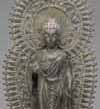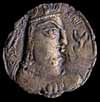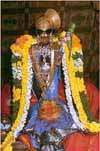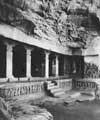|
|
 |
==Met
Museum timelines for South Asia 500-1000 CE: *Himalayan
region*; *North*;
*South*.
Now
the history becomes so complex, and the art-historical material so
rich,
that the Met has to split its formerly single timeline into three
separate
regional lines. |
 |
==Indian
Ocean trading communities prosper and increase (c.500
onwards).
Even as Roman trade sharply declines, Arabs and others take up the
slack.
South India provides convenient ports for the sea trade all over the
Indian
Ocean. In ports up and down the Malabar (southwestern) and Coromandel
(southeastern)
coasts, mercantile communities of Arabs, Armenians, and others become
larger.
Discussion: *Indian
Ocean*; *The
Hindu*; *beads*. [*Routes*] |
 |
==the
Hunas conquer the Punjab and Kashmir (c.500–50), which
results
in the fall of the Gupta empire and the emergence of smaller regional
kingdoms.
(*silk
Road*). Their kings, Toramana (r.c.490-515) and his successor
Mihirakula
(r.c.515-40), use Brahmi inscriptions on their coins (*grifterrec*). |
 |
==the
Bhakti movement begins in the South (c.500 onwards). As
the
Met
sums it up, "Devotional (bhakti) theistic movements develop in
present-day
Tamil Nadu. Early cults, primarily devoted to Shiva and Vishnu, include
the sixty-three Shaiva Nayanar and twelve Vaishnava Alvar saints
(traditionally
including low-caste men and a woman, Antal), in the seventh century.
These
poets sing of their direct experience of god. Non-Puranic and Vedic
deities
are associated with and absorbed into mainstream Puranic ones; for
example,
the god Murukan, mentioned in early Tamil Cankam literature, comes to
be
absorbed into Shaiva traditions as Shiva's son, Skanda." More
resources:
*Sources of
Indian Tradition*. |
 |
==Elephanta
(c.550-75): A Shaivite rock-cut temple is built on Elephanta Island,
Bombay,
by Krishnaraja I of the Kalachuri dynasty, who is greatly devoted to
Shiva.
Images: *DSAL*;
*Berger*;
discussion: *art
and archaeology*. [*Routes*] |
 |
==Badami,
in Bijapur, Karnataka (c.578): Rock-cut temples to Shiva and Vishnu are
built at Badami, capital of the Early Chalukya dynasty, and prove
influential
in shaping the iconography of later temples. Images: *DSAL*;
*Berger*;
*protomatter*;
discussion: *art
and archaeology*. [*Routes*] |
|
|







